Duke of Vicenza
Pronunciation:
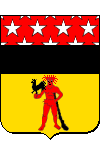
Armand Augustin Louis de Caulaincourt was born in Caulaincourt, in Picardy, on December 9, 1773, into an illustrious family. He joined the army at fifteen and quickly moved through the lower ranks. When war broke out in 1792, he was already a captain. However, his nobility making him suspect, he volunteered as a simple soldier in the Parisian national guard in June 1792.
He quickly regained his ranks and became aide-de-camp to General Jean-Baptiste Annibal Aubert-Dubayet in the Western Army. The latter took him on a mission with him to Venice then to Constantinople (March 1796).
He returned to France in June 1797. His uncle, General Louis-Auguste Jouvenel des Ursins d'Harville, made him his aide-de-camp. Caulaincourt was promoted to brigade leader in July 1799. He fought on the Rhine.
In October 1801, Charles-Maurice de Talleyrand-Périgord charged him with bringing the new Tsar Alexander I a personal letter from Napoleon Bonaparte. He stayed six months in Saint Petersburg without a very specific mission. However, it prepared the ground for the establishment of closer relations between France and Russia.
He returned to Paris in April 1802. First consul Napoleon Bonaparte chose him as aide-de-camp then named him inspector general of the consular stables in August. A year later, Caulaincourt became brigadier general. Responsible for various missions as part of his duties, he was in Strasbourg in March 1804 when the Duke of Enghien was arrested. However, he took no part in it and did not even learn of the prisoner's execution until several days after it had taken place.
At the birth of the Empire, Caulaincourt was named grand squire. Napoleon I nevertheless continued to entrust him with missions well beyond the limits of his function. The Emperor appreciated the order, zeal, meticulousness and elegance of his subordinate.
Caulaincourt was promoted to major general in 1805 and served two years on the General Staff of the Grande Armée. He was then sent as French ambassador to the Russian court in November 1807.
He received the title of Duke of Vicenza in 1808 in order to increase his prestige with the Russian government. Over the next three years, he gained the trust of Alexander I but lost that of the Emperor. The latter stopped corresponding directly with him in 1809. In June 1811, Caulaincourt was recalled to Paris.
After his return, his first interview with Napoleon lacked cordiality. His advice: prudence, flexibility, a conciliatory attitude towards Russia, was not very pleasant to the ear of the sovereign. Caulaincourt was sent back to his stables.
He returned to Russia the following year, during the French invasion. In December 1812, he had the privilege of spending ten days alone with the Emperor, when the latter left the army to return hastily to Paris after attempted coup d'état of general Claude-François de Malet. The confidences that Napoleon then made to him are transcribed in his Memoirs.
In 1813, Caulaincourt was appointed senator. He acted for a time as grand marshal of the palace after the death of Geraud-Christophe Duroc before temporarily replacing Hugues-Bernard Maret at the Ministry of Foreign Affairs. In the negotiations in which he participated ‒ the Pleiswitz conference then the Prague congress ‒ the friendships established previously in Russian diplomatic circles earned him a certain success. In November, he became Minister of Foreign Relations.
The following year, he participated in the Châtillon congress, which led to nothing. In April 1814, he brought to the Tsar, in the company of marshals Michel Ney and Etienne Macdonald, the abdication of Napoleon I. His plea in favor of Napoleon II remained unsuccessful.
Despite Caulaincourt's rallying to the Restoration, the question of his participation in the execution of the Duke of Enghien arose from his first contact with the Bourbons. Despite the Tsar's intervention, a violent campaign was launched against him, led by dubious characters with the tacit support of the Count of Artois. Caulaincourt suffered various insults: he was refused a peerage and deprived of some of his income.
During the Hundred Days, Napoleon once again conferred on him the dignity of grand squire and recalled him to the Ministry of Foreign Relations. It was a way for the Emperor to convey to Europe his desire for peace. We know what happened.
After Waterloo, Caulaincourt became a member of the provisional government commission. Joseph Fouché offered him passports that would allow him to leave France where his freedom, even his life, will be in danger after the return of Louis XVIII. He did not accept them. Alexander I, whose protection he expected, refused to receive him but had his name removed from the proscription order of July 24, 1815, thus perhaps avoiding him suffering the fate of Marshal Ney or General La Bédoyère.
Caulaincourt then led a retired existence, sometimes in the Picardy lands of his ancestors and sometimes in Paris. He died there on February 19, 1827. His body rests in the Père-Lachaise cemetery (29th division).
"Armand Augustin Louis de Caulaincourt, Duke of Vicenza" by François Pascal Simon Gérard (Rome 1770 - Paris 1837).
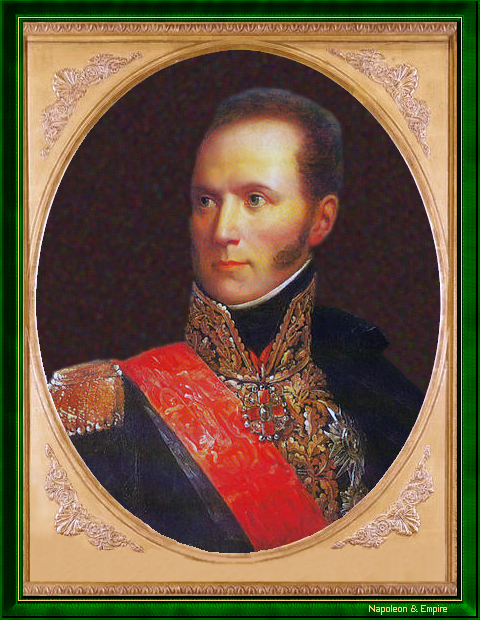
Throughout his life, and again in his will, he defended himself against the accusation of having participated in the arrest, or even the execution, of the Duke of Enghien. Although he produced the most obvious proofs that this was not the case, although the Tsar himself ‒ whose court had given such a bad reception for the same reason to the Duke of Rovigo and was so friendly with that of Vicenza ‒ agreed, the slander still remains very much alive, widespread in a number of biographies of Caulaincourt.
The judgment passed on him by Napoleon I differs depending on whether it passes through the pen of Las Cases or Gourgaud. According to the first, the Emperor was full of praise for his ambassador. For the second, Napoleon saw in him only an excellent head of the Stable.
The name of Caulaincourt is inscribed on the 31st column (west pillar) of the Arc de Triomphe de l'Étoile.
A street in the eighteenth arrondissement of Paris bears his name.
Other portraits
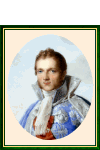
Enlarge
"Armand Augustin Louis de Caulaincourt, duc de Vicence". Miniature by Jean-Baptiste Isabey (Nancy 1767 - Paris 1855) from the famous Table of Austerlitz (a.k.a. Table of the Marshals).
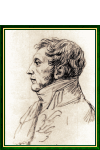
Enlarge
"M. de Caulaincourt". Drawing by Jacques-Louis David (Paris 1748 - Brussels 1825).
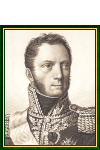
Enlarge
"Armand Augustin Louis de Caulaincourt, Duke of Vicenza". Engraving by Adolphe Forestier (Paris 1801 - Paris 1885).

Enlarge
"Armand Augustin Louis de Caulaincourt, Duke of Vicenza". Engraving by William Hopwood (1784-1853).